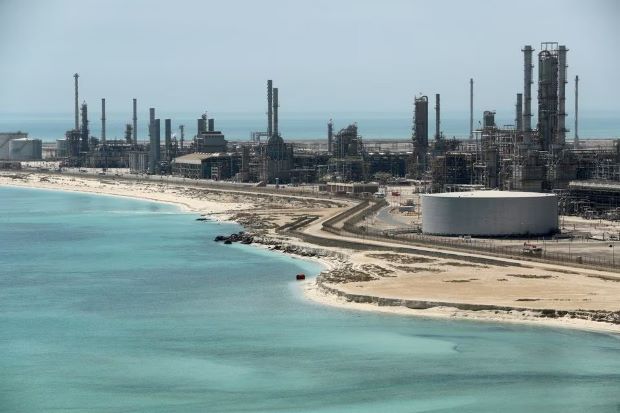Oil prices jump on Saudi output cut
By Roland Jackson
LONDON – Oil rallied Monday (5) after key producer Saudi Arabia slashed output by a million barrels in a bid to prop up prices, while fellow OPEC+ members agreed to continue current cuts to 2024.
International benchmark Brent oil and US counterpart WTI crude won more than 2% before pairing gains.
Asian equities mostly rose, with Tokyo piling on more than 2% to hit a three-decade peak, but European stock markets fell.
Wall Street traded mixed after having rallied on Friday (2) on strong US jobs data that lifted hopes the US Federal Reserve will refrain from hiking interest rates next week.
Sentiment also remains largely buoyant after the United States clinched a breakthrough deal late last week to lift its debt ceiling and avert a disastrous default.
The dollar lost ground against the euro and yen after survey data showed weakness in the US services sector, which further increased chances of the Fed pausing its interest rate hikes.
The euro was boosted while eurozone stocks sank further after ECB chief Christine Lagarde said there was little indication underlying inflationary pressures had been contained, flagging further interest rate hikes.
“The outcome of the much-anticipated OPEC+ meeting has created a splash in the oil market, if not a wave,” said KCM Trade analyst Tim Waterer.
“Saudi Arabia has backed up their words with actions by going it alone and extending their supply cuts.”
The 23-nation OPEC+ alliance, which includes Russia, agreed Sunday (4) to continue current output cuts until the end of next year.
But influential player Saudi Arabia also announced its own new cutback taking July production to nine million barrels per day.
Saudi Energy Minister Prince Abdulaziz bin Salman told reporters that he “will do whatever is necessary to bring stability to this market”.
OPEC+ nations are grappling with falling prices on concerns oil demand will weaken as major economies struggle to cool elevated inflation.
Oil has plummeted about 10% since April, when several OPEC+ members agreed to cut production voluntarily by more than one million bpd in an attempt to stem losses.
“Saudi will continue doing the heavy lifting of production cuts, hoping that its efforts will reverse the falling price trend,” noted Swissquote Bank analyst Ipek Ozkardeskaya.
Stephen Innes, managing partner at SPI Asset Management, said it was a normal reaction for oil prices to rise following the Saudi production cut.
“Regardless, macroeconomic data will continue to be the primary driver of speculative oil demand,” he said.
“Investors are still digesting Friday’s jobs report which didn’t settle the debate on whether the Fed should pause or not ahead of the meeting next week,” said OANDA analyst Craig Erlam.
Wall Street had surged Friday after data showed the US economy added 339,000 jobs in May, far more than expected, indicating the labour market remained strong.
The report also revealed wage gains moderated slightly.
Analysts said the ‘Goldilocks’ reading – neither too good nor too bad – suggested the world’s biggest economy was not facing an immediate risk of a recession and could still give the Fed room to hold policy steady.
“There were positives and negatives in the report but ultimately now it comes down to the inflation data next week,” added Erlam.
The Fed has lifted rates 10 times since early last year to try to tame rampant inflation fuelled largely by energy costs.
– Agence France-Presse



Comments are closed, but trackbacks and pingbacks are open.